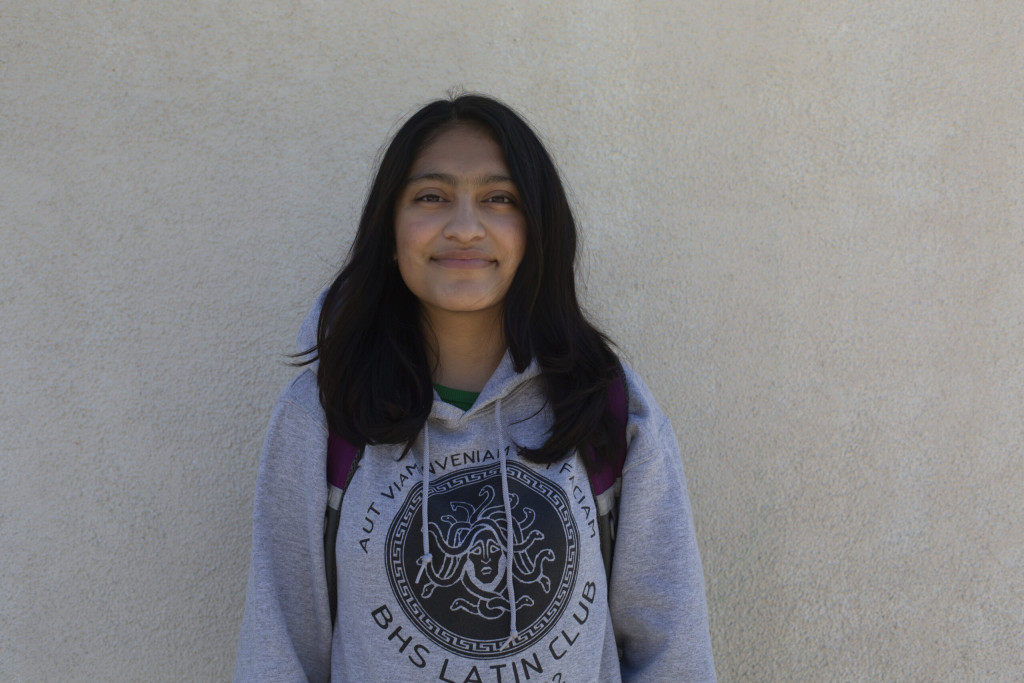“A lot of the newer generation is becoming more accepting about (being) queer and Hispanic, but people who are older and have been around for longer haven’t really been exposed to it since they’re used to their more traditional ways,” said Bex Campillo Quitano, a junior in Arts and Humanities Academy (AHA). For gender queer Latinx students at Berkeley High School, identity can be a complicated topic due to the lack of acceptance of their gender and sexuality that is felt from traditional values prevalent in Latinx culture.
Spanish itself is a gendered language, and as a gender queer or non-binary person, it can be difficult to find ways of introducing and talking about oneself in a way that people feel fully describes their identity. Latinx is an Americanized term that has become fairly common in recent years, but it can’t be used in Spanish. “Latine” is a term that some people have adopted, although it isn’t familiar to all Spanish speakers.
“There isn’t really a pronoun in Spanish where it’s in the middle … I don’t mind (elle), but I just personally don’t use it,” said Campillo Quitano, who uses he/him pronouns and identifies as a trans man but chooses to present as somewhere “in the middle.”
Using “ellos,” which translates to “they” in English, can also be used to address non-binary, trans, or gender queer-identifying people. Native Spanish speakers sometimes use this term to talk about people that they don’t
know or don’t assume the gender identity of. However, addressing people this way still has a masculine connotation because “ellos” is technically a male pronoun. “Ellas” is the female term for “they,” but it wouldn’t be used in this context.
A common struggle that some students shared was that their parents and family didn’t know much at all about LGBTQ culture. “My family is very conservative still and very religious so I feel like (my Latino and trans identities) intersect in a very bad way,” said Alastair Kudsk, a senior in AHA who uses he/they pronouns. Their family in Mexico hasn’t shown acceptance of his identity and he mentioned that had he grown up in Mexico, he “probably would have stayed closeted for much longer.”
In Latin American culture, machismo is the aggressive pride in masculinity that plays a large part in gender stereotypes. It is a main reason why many Latinx people aren’t accepting of genderqueer people because it creates a norm of gender binary.
Andy Melendez Garcia is a junior in AHA who uses they/them pronouns. Their parents are from El Salvador and when first expressing their gender and sexuality, their parents didn’t fully accept them because it confused them. “You kind of have to be either a man or woman so that people know how to treat you. … Families treat you based on your sex, that’s just what happens,” said Melendez Garcia. Fortunately their parents have come to understand how they want to be seen and are open to new ideas about it.

One place at BHS that several genderqueer Latinx students have attested to finding community, is in AHA. They are surrounded by people that they can connect to and that accept them for who they are. AHA is structured to be inclusive to many different types of students with varying identities. Campillo Quitano discussed how for their sophomore year, they were in Academy of Medicine and Public Service but this year transferred to AHA where they have felt understood by both their peers and teachers and feel that it is a much more fitting environment for them. “Everybody there in some sort of way (isn’t) exactly the social norm,” said Melendez Garcia. They talked about their experience in AHA as a place where they have a supportive community of people who they find they are similar to or understanding of them.
Although Berkeley is considered to be a very accepting place for LGBTQIA+ people and Latinx people, it can sometimes be blind to the hardships that members of these communities continuously face. For those sharing both identities, not fitting into either the male or female presenting box, and instead choosing a place somewhere in the middle, it often means they are viewed as “other.”
“If you try to cross those boundaries, then you’re not a part of the community. You get isolated,” said Kudsk.





